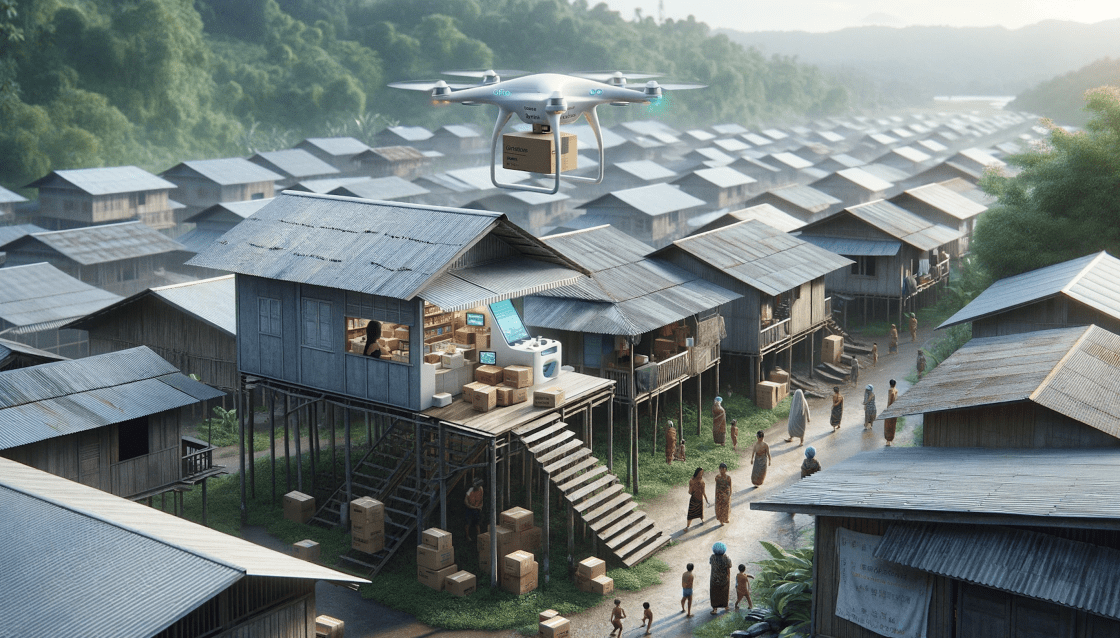In an increasingly connected world, a surprising number of people remain on the fringes of the digital landscape. Recent statistics highlight a stark digital divide: approximately 2.6 billion individuals globally have never accessed the internet, while another 1 to 2 billion endure unreliable and slow connectivity. This gap presents not just a challenge but a burgeoning opportunity for innovative solutions to bridge this divide, particularly through the use of mesh networks, satellite internet, and drone technology.
Understanding the Scope of the Digital Divide
The digital divide is most pronounced in rural and remote areas where traditional infrastructure has either failed to reach or is economically unfeasible. The consequences of this divide are profound, limiting access to information, education, healthcare, and economic opportunities. However, emerging technologies offer new possibilities to address these disparities.
Mesh Networks: A Gateway to Connectivity
Mesh networking represents a transformative approach to internet access. Unlike traditional networks that rely on a few centralized points of connectivity, mesh networks allow individual devices to connect directly to each other. Each device in a mesh network can act as an independent router, passing along data to the next device. This creates a resilient and flexible network that can expand internet access to areas where it was previously unavailable or unreliable.
Integrating Drone Technology for Delivery
Drones are revolutionizing delivery systems in many parts of the world, and they have a critical role to play in rural areas. By integrating drones with mesh networks, communities can facilitate the ordering and delivery of goods—even in locations that lack conventional roads or transportation infrastructure. Drones can swiftly deliver medical supplies, food, and other necessities, effectively bypassing traditional logistical challenges.
Satellite Internet as a Backbone
While mesh networks can effectively distribute local connectivity, satellite internet can serve as the backbone, providing the initial access point to the internet that mesh networks can then distribute. Companies like SpaceX with their Starlink project, and others investing in satellite technology, are poised to offer global coverage, including to the most remote areas. This technology promises high-speed internet access that is independent of terrestrial constraints.
Product Ordering Pods: Enabling Access Without Ownership
To enhance connectivity for those without personal internet-capable devices, an innovative approach involves installing product ordering pods in community centers or other common areas. These pods enable individuals to order products and services, which are then delivered directly via drone. This setup promotes inclusivity and stimulates local economies by linking rural consumers to global markets. Additionally, these pods can be used to order the necessary equipment for setting up local internet networks, facilitating a community-driven, self-sustaining approach to expanding connectivity.
The Collective Benefit: Stability, Opportunity, and Growth
The integration of mesh networks, drone delivery, and satellite internet has the potential to dramatically transform rural communities. By providing reliable internet access, these technologies can help bridge educational gaps, offer new economic opportunities, and improve healthcare outcomes. Furthermore, the creation of new jobs related to drone maintenance and network management can contribute to community development and stability.
Looking Ahead: A More Connected Tomorrow
The future is promising for the integration of technology in overcoming the digital divide. As these technologies become more widespread and cost-effective, their adoption in rural and remote areas could signify a major step towards global connectivity and equality. The potential for mesh networks combined with drone delivery and satellite internet to create more stable, prosperous, and connected communities around the world is not just a possibility—it is within reach.
By embracing these innovative solutions, we can ensure that the benefits of the digital age are not limited to urban centers but are extended to every corner of the globe, helping those in need and paving the way for a more inclusive future.






